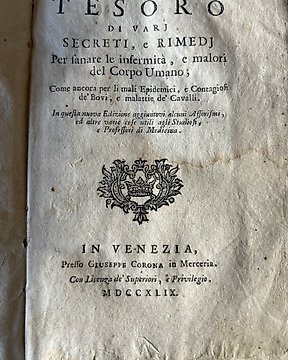
Giuseppe Corona - Tesoro di vari segreti e rimedi per sanare le infermità e malori del corpo umano - 1749
编号 88064537

编号 88064537

"Phantastica
droga stupefacenti ed eccitanti"
Dott. Luigi Lewin
Traduzione sulla seconda edizione tedesca dott. Alessandro Clerici
Casa editrice Vallardi, Milano 1928
1 edizione italiana
23 x 14.5 spessore 4 cm
Rarissimo
In discrete condizioni rilegatura in alcune parti non perfetta presenti alcune macchie dell' eta' sulla copertina
Il medico, farmacologo e tossicologo tedesco Louis Lewin (1850-1924) si dedicò allo studio sistematico delle sostanze psicotrope o “modificanti le funzionalità cerebrali”. È considerato uno dei fondatori della branca dell’antropologia chiamata etnobotanica. Sembra sia stato il primo europeo a descrivere in termini scientifici il peyote nel 1886. Fu studioso delle tossicomanie, in particolare della morfina.
Nella sua opera principale, Phantastika, pubblicata nel 1924 a Berlino, egli suddivideva le sostanze psicotrope in cinque categorie: gli Euforici, i Fantastici, gli Inebrianti, gli Ipnotici e gli Eccitanti. In quest’opera pioneristica, Lewin descrive gli effetti delle varie sostanze, l’uso rituale e voluttuario, ne insegue anche le tracce nella storia delle letteratura, nelle fiabe e negli usi. ►
Le sostanze che Lewin chiamava “fantastiche” saranno più tardi chiamate con altri nomi: “allucinogeni”, “psichedelici” e infine “enteogeni”. In questa categoria, Lewin fu tra i primi a descrivere gli effetti certi di sostanze come l’amanita muscaria e il peytol (o peyote).L’importanza di Phantastica non sta nei meriti intrinseci dell’opera, che fu presto superata, ma nell’influsso che ebbe sulle generazioni di intellettuali modernisti. Fra questi Aldous Huxley che lesse e recensì l’edizione inglese di Phantastica.
In Italia l'edizione del 1928 per la sua importanza nella cultura psichedelica fu ristampata in anastatica nel 1981 dall'editore Savelli nella collana Controcultura e successivamente nel 1993 da FME
"Phantastica
droga stupefacenti ed stimulanti"
Dott. Luigi Lewin
Translation on the second German edition Dr. Alessandro Clerici
Vallardi publishing house, Milan 1928
1 Italian edition
23 x 14.5 thickness 4 cm
Extremely rare
In fair condition binding in some parts not perfect some age stains on the cover
The German physician, pharmacologist and toxicologist Louis Lewin (1850-1924) devoted himself to the systematic study of psychotropic or “brain-modifying” substances. He is considered one of the founders of the branch of anthropology called ethnobotany. He seems to have been the first European to describe peyote in scientific terms in 1886. He studied drug addiction, particularly morphine. In his main work, Phantastika, published in 1924 in Berlin, he divided psychotropic substances into five categories: Euphorics, Fantastics, Inebriants, Hypnotics and Excitants. In this pioneering work, Lewin describes the effects of various substances, their ritual and voluptuous use, and also traces their traces in the history of literature, fairy tales and uses. ►
The substances that Lewin called “fantastic” will later be called by other names: “hallucinogens”, “psychedelics” and finally “entheogens”. In this category, Lewin was among the first to describe the certain effects of substances such as amanita muscaria and peytol (or peyote). The importance of Phantastica does not lie in the intrinsic merits of the work, which was soon surpassed, but in the influence it had on generations of modernist intellectuals. Among them Aldous Huxley who read and reviewed the English edition of Phantastica.
In Italy, the 1928 edition, due to its importance in psychedelic culture, was reprinted in facsimile in 1981 by the publisher Savelli in the Controcultura series and subsequently in 1993 by FME